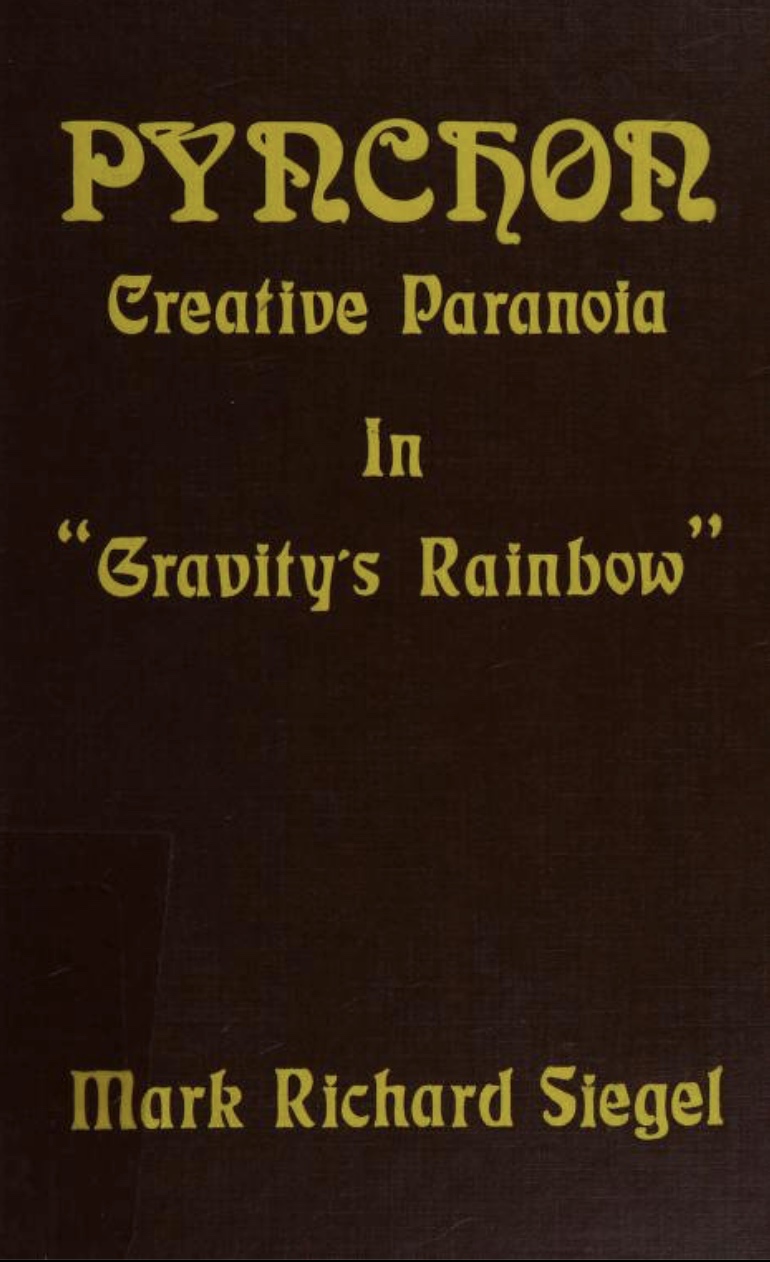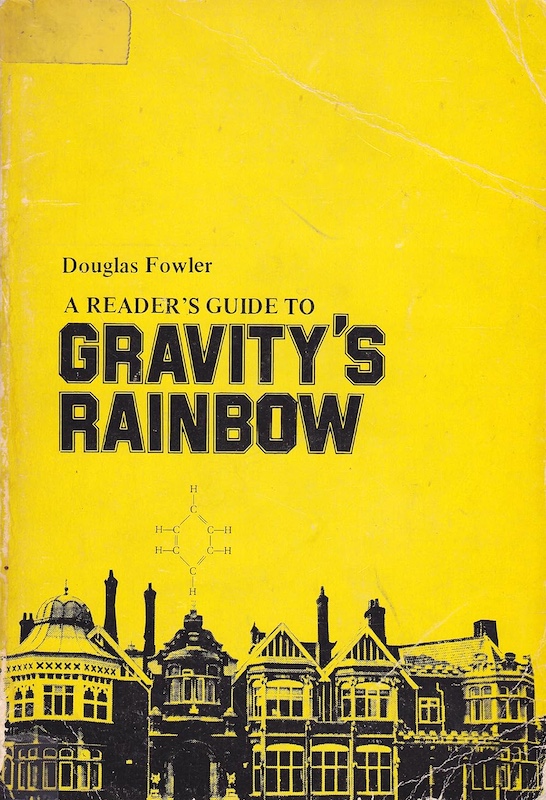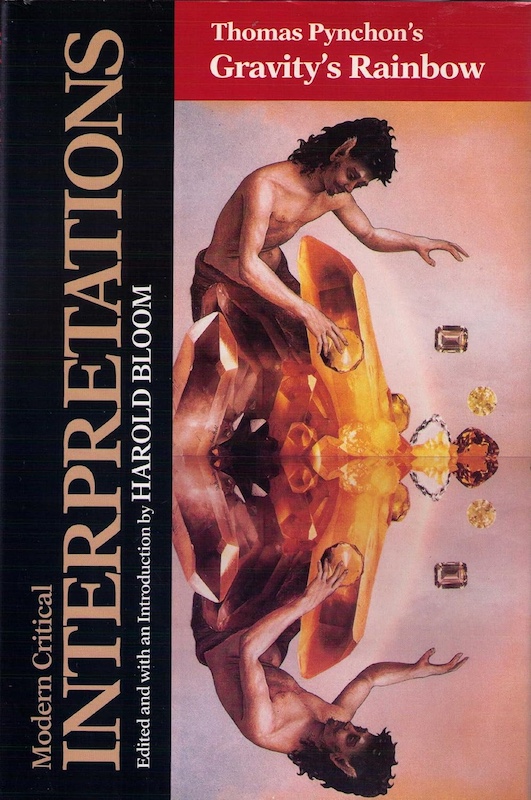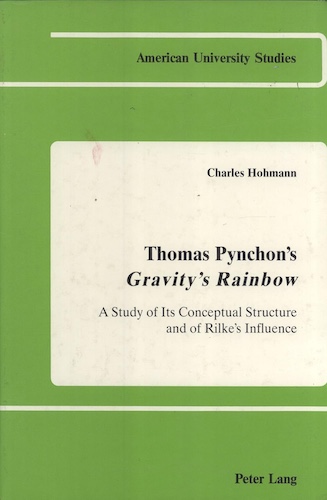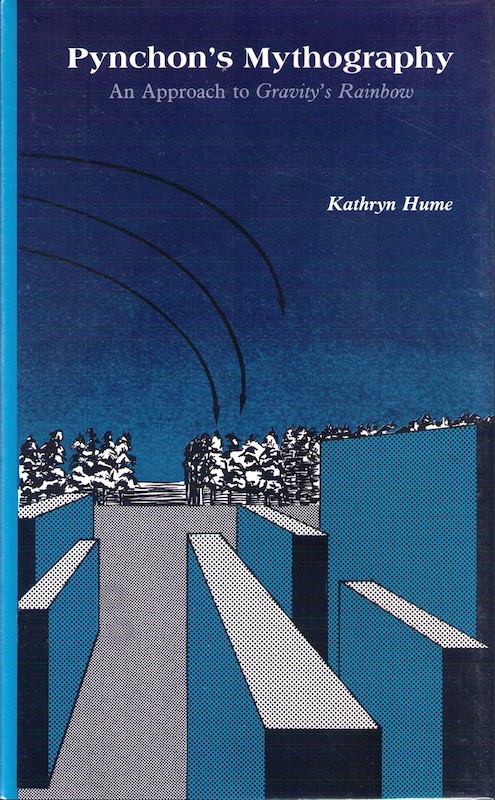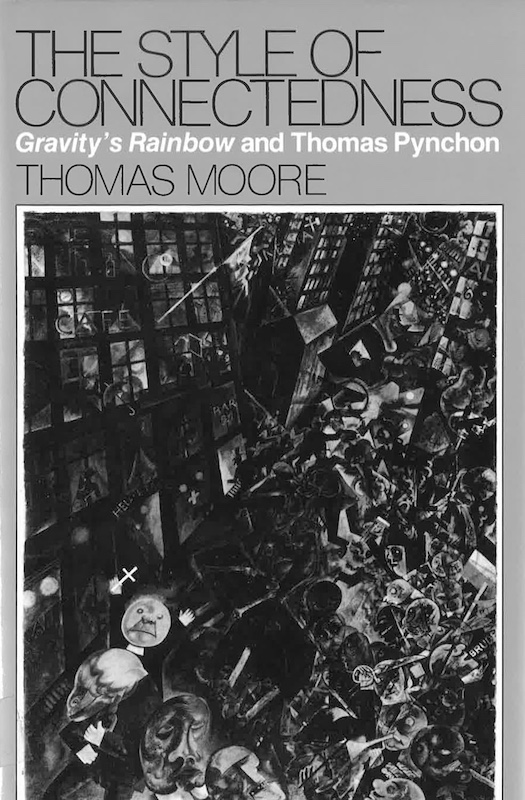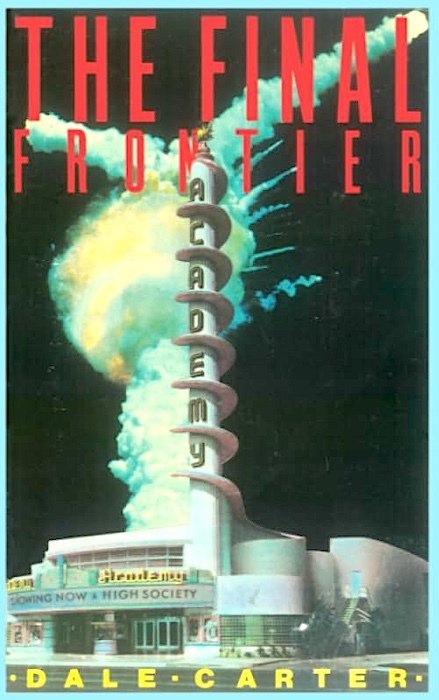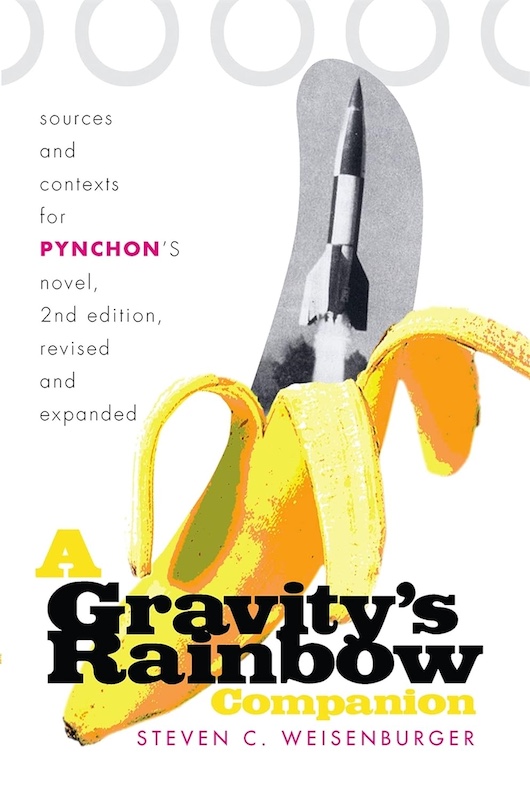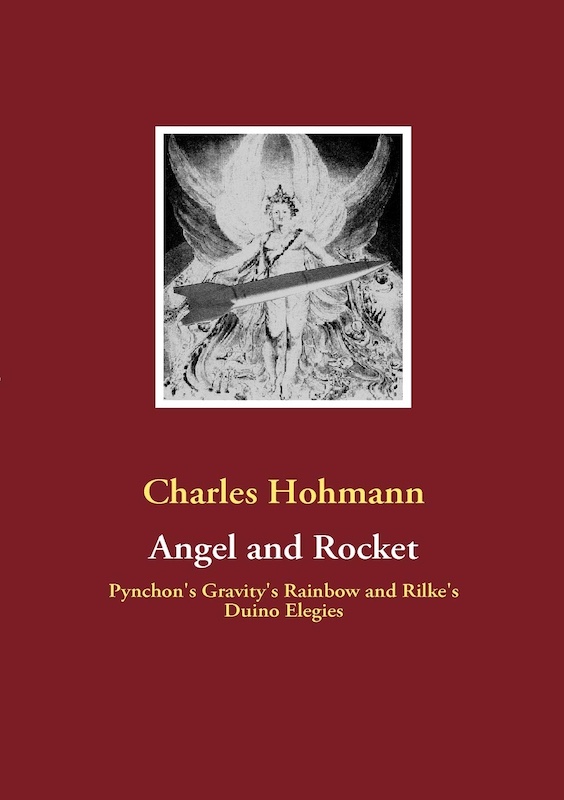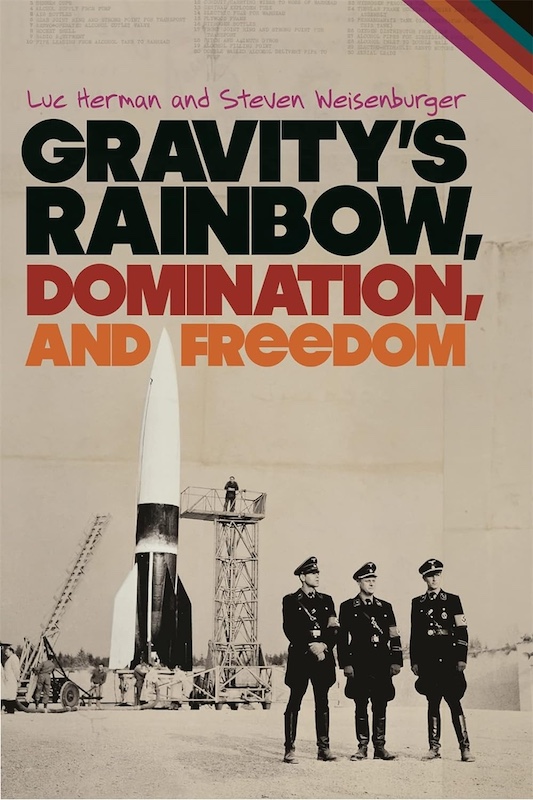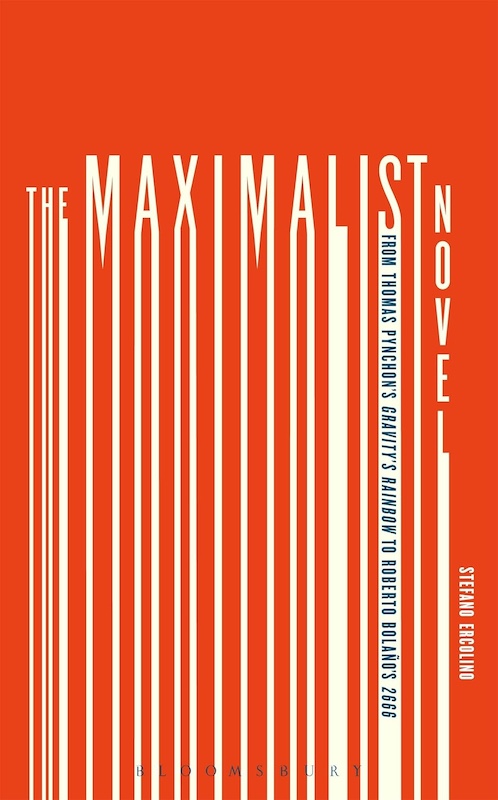Pynchon Criticism: “Gravity’s Rainbow”
- At January 11, 2021
- By Spermatikos Logos
- In Pynchon, The Modern Word
 0
0
Proverbs for Paranoids: 4. You hide, they seek.
—“Gravity’s Rainbow”
Pynchon Criticism: Gravity’s Rainbow
This page collects essays, analysis, and guides centering on Gravity’s Rainbow, Pynchon’s third novel, published in 1973. Most of the books profiled in this section are accompanied by a brief description, a summary of contents, and the official publisher’s blurb. If any visitor would like to contribute informed commentary for any of these works, please contact Spermatikos Logos! The books are listed in chronological order of publication. Clicking the image of a book takes you directly to Amazon.
Pynchon: Creative Paranoia in Gravity’s Rainbow
Kennikat Press, 1978.
Online: Internet Archive
Online: Internet Archive
The appropriately-titled Creative Paranoia is the first full-length study of Gravity’s Rainbow. Antonio Marquez reviewed Seigel’s book in the Rocky Mountain View of Language and Literature, Vol 33, No. 2, Spring 1979. The review is reprinted in full below:
In 1975 Edward Mendelson prevised that Pynchon’s work would create the largest critical industry since the Joycean, simultaneously cautioning that Gravity’s Rainbow—a sui generis novel—would test the traditional tools of literary criticism and the resources of the critic. There are encouraging signs that Mendelson’s prediction may be fulfilled and evidence that the exegetical challenge is being met by Pynchon scholars. Siegel’s book is a felicitous example; it explicates with admirable clarity Gravity’s Rainbow’s “progressive knotting into,” the complex metaphorical constructs and multiple techniques that animate the novel. Taking off from Pynchon’s definition of paranoia “as the leading edge of awareness that everything is connected,” Siegel advances creative paranoia, a mode of consciousness and a fiction-making technique, as the philosophical and aesthetic foundation of Pynchon’s ambiguous and paradoxical fiction.
Although Siegel occasionally traverses well-trodden ground and presents reiterative explanations of Pynchon’s eclecticism—e.g., Jung, Weber, Whitehead, Henry Adams—his explications are cogent and can assist the novice reader of Gravity’s Rainbow. Similarly, there are benefits—and provocative material—for the Pynchon scholar. The second and third chapters, which discuss narrative point of view and characterization, are original and compelling. The second chapter is especially noteworthy. It is a fresh and inventive treatment of Pynchon’s narrative techniques, including a brief but illuminating discussion on Pynchon’s use of film and cinematic techniques. Siegel makes a convincing argument that an understanding of narrative point of view is necessary to grasp the spirit of the novel and comprehend its meaning. Moreover, he addresses a discrepancy in Pynchon scholarship; the preponderant criticism on Gravity’s Rainbow has focused on thematic issues and much less attention has been paid to the novel’s narrative structure.
Siegel has accomplished a difficult, two-fold task; his study is a significant addition to Pynchon scholarship and valuable assistance for the general reader who seeks an intelligent and sensible guide through the encyclopedic—and often forbidding—expanse of Gravity’s Rainbow.
A Reader’s Guide to Gravity’s Rainbow
Ardis, 1980.
Publisher’s Description: Pynchon’s most difficult work, like similarly complex novels such as those by Joyce or Nabokov, has resisted attempts by readers to sort through all its mysteries. A Reader’s Guide to Gravity’s Rainbow, the product of years of research, is the first attempt to rigorously search out and set down all of Pynchon’s literary allusions and historical references, and to unravel the complex structure of sub-plots and scenes. Douglas Fowler describes each scene in the novel separately, identifying its characters and explaining how it fits into the novel as a whole. He also identifies the novel’s actual historical figures and incidents, translates words and phrases from Greek, German, French, Spanish, Russian, Herero, and various other slang and dialects, and discusses the complex science and rocket technology that went into the writing of Gravity’s Rainbow.
Thomas Pynchon’s Gravity’s Rainbow (Modern Critical Interpretations)
Chelsea House, 1986.
Publisher’s Description: A collection of critical essays on Pynchon’s Gravity’s Rainbow arranged in chronological order of publication.
Contents:
- Harold Bloom: Introduction
- Paul Fussell, “The Ritual of Military Memory”
- Louis Mackey, “Paranoia, Pynchon, and Preterition”
- Edward Mendelson, “Gravity’s Encyclopedia”
- Richard Poirier, “Rocket Power”
- Gabriele Schwab, “Creative Paranoia and Frost Patterns of White Words: Making Sense in and of Thomas Pynchon’s Gravity’s Rainbow”
- Tony Tanner, “Gravity’s Rainbow: An Experience in Modern Reading”
- Craig H. Werner, “Recognizing Reality, Realizing Responsibility”
Thomas Pynchon’s Gravity’s Rainbow: A Study of Its Conceptual Structure and of Rilke’s Influence
Peter Lang, 1986.
Hohmann’s doctoral dissertation, this books “delineates what can be called the conceptual structure of Gravity’s Rainbow and analyzes it in terms of Rilke’s Duinesian Elegies, a text which was a major influence on Pynchon’s novel.” Long out of print, the author republished the Rilke-related material in 2009 as Angel and Rocket, listed below.
Pynchon’s Mythography: An Approach to Gravity’s Rainbow
Southern Illinois University Press, 1987.
Publisher’s Description: The exhausting plenitude of loosely connected detail in Gravity’s Rainbow makes it a favorite of postmodern critics, who claim it describes a modern, random, unknowable universe. Hume expands the possibilities as she discloses a mythic structure that underlies Pynchon’s work and provides easier access to his world. “Myth turns chaos into cosmos,” Hume explains, describing how the profuse detail of Pynchon’s book allows for the creation of a “world humankind shapes out of chaos by means of ritual and myth. . . a set of interlocking stories. . . [that] fit into a narrative sequence or mythology that conveys, supports, and challenges cultural values.” Pynchon’s “mythology is not rigidly consistent,” Hume notes, but “several strands of mythological action. . . serve a stabilizing function in this chaotic book.” Pynchon creates his own “unheroic” hero to show the way for making sense of the fragmented experience of life in the postmodern world.
The Style of Connectedness: Gravity’s Rainbow and Thomas Pynchon
University of Missouri Press, 1987.
Publisher’s Description: Thomas Pynchon’s Gravity’s Rainbow, arguably one of the greatest works of fiction in this century, has often been considered despairing, absurdist, or niilistic. Now, in a monumental effort to make Pynchon’s work more accessible, Thomas Moore surveys all the major, and often confusing, backgrounds in Gravity’s Rainbow—from archaic myths to quantum-physical theory; from romantic thought to rocket technology; from seventeenth-century Puritanism, through the ideas of Weber, Jung, and Marshall McLuhan, to the worlds of Weimar and Hollywood movies—to help Pynchon’s reader understand the weird, frightening, funny, lyrical, surreal, and ultimately hopeful cosmos of Pynchon’s fictions. By exploring the novel’s internal strategies and its brilliant integrations of background information, Moore illustrates how Gravity’s Rainbow remains movingly humane, as its author, the agonized mediator of a bewildering field of cultural information, remains excruciatingly sensitive to every human image and gesture, searching for the chances for love and connection that still hide in the vast designs of things. The reader of Moore’s work should emerge with a thorough appreciation of Pynchon’s unique style of genius, of his optimism, of his intense moralism, and of the justness of the widespread claim that Pynchon is the most brilliant “encyclopedic” writer of fiction since Joyce.
The Final Frontier: The Rise and Fall of the American Rocket State
Verso, 1988.
Publishers Weekly: According to British historian Carter, as much as the 1930s were shaped by the rise of imperialist powers, the postwar era has been characterized by the quest for the domination of space, and the rocket is the symbol and metaphor for postwar American social history. Borrowing his terminology from Pynchon’s novel Gravity’s Rainbow, Carter says this shift from the Nazi “Oven State” to the American “Rocket State” was signaled by “the appearance of men for whom rocketry has become ideology and idolatry.” Despite this intriguing premise, the first third of the book is mired in intellectually self-indulgent literary criticism (of Pynchon, Mailer, et al.) and cultural critique (of film, television, advertising), at times insightful, yet, in large part, remote, jargonistic and tangential. The section in which John Kennedy and the Mercury astronauts are portrayed as Hollywood-type “leading men,” i.e., actors chosen to play the role of hero for an admiring audience, is more focused and accessible. Here the analysis is at its sharpest, for example, in the idea that JFK’s championing of the space program was actually propaganda and opportunism, or that the astronauts were both components and commodities of NASA. Carter concludes with the unconvincing argument that, since the ‘70s, NASA’s supposed shift away from technological promises into overtly defense-related ends precipitated the Rocket State’s demise. He fails to explain why defense is a fundamental change rather than the inevitable evolution of the space program.
A Gravity’s Rainbow Companion: Sources and Contexts for Pynchon’s Novel
University of Georgia Press, 2006.
Originally published in 1988, this extraordinarily useful guide was updated and revised in 2006.
Publisher’s Description: Adding some 20 percent to the original content, this is a completely updated edition of Steven Weisenburger’s indispensable guide to Thomas Pynchon’s Gravity’s Rainbow. Weisenburger takes the reader page by page, often line by line, through the welter of historical references, scientific data, cultural fragments, anthropological research, jokes, and puns around which Pynchon wove his story. Weisenburger fully annotates Pynchon’s use of languages ranging from Russian and Hebrew to such subdialects of English as 1940s street talk, drug lingo, and military slang as well as the more obscure terminology of black magic, Rosicrucianism, and Pavlovian psychology. The Companion also reveals the underlying organization of Gravity’s Rainbow—how the book’s myriad references form patterns of meaning and structure that have eluded both admirers and critics of the novel. The Companion is keyed to the pages of the principal American editions of Gravity’s Rainbow: Viking/Penguin (1973), Bantam (1974), and the special, repaginated Penguin paperback (2000) honoring the novel as one of twenty “Great Books of the Twentieth Century.”
Angel and Rocket: Pynchon’s Gravity’s Rainbow and the Duino Elegies
Books On Demand, 2009.
This book is a reprint of the second part of Hohmann’s 1986 book, Thomas Pynchon’s Gravity’s Rainbow: A Study of Its Conceptual Structure and of Rilke’s Influence, originally published by Peter Lang in 1986. Aside from a more handsome cover—one can never go wrong with Blake!—the text is identical, so remains “frozen” in the mid-eighties.
A Gravity’s Rainbow, Domination, and Freedom
University of Georgia Press, 2013.
Publisher’s Description: When published in 1973, Gravity’s Rainbow expanded our sense of what the novel could be. Pynchon’s extensive references to modern science, history, and culture challenged any reader, while his prose bent the rules for narrative art and his satirical practices taunted U.S. obscenity and pornography statutes. His writing thus enacts freedom even as the book’s great theme is domination: humanity’s diminished “chances for freedom” in a global military-industrial system birthed and set on its feet in World War II. Its symbol: the V-2 rocket. “Gravity’s Rainbow,” Domination, and Freedom broadly situates Pynchon’s novel in “long sixties” history, revealing a fiction deeply of and about its time. Herman and Weisenburger put the novel’s abiding questions about freedom in context with sixties struggles against war, restricted speech rights, ethno-racial oppression, environmental degradation, and subtle new means of social and psychological control. They show the text’s close indebtedness to critiques of domination by key postwar thinkers such as Erich Fromm, Herbert Marcuse, and Hannah Arendt. They detail equally powerful ways that sixties countercultural practices―free-speech resistance played out in courts, campuses, city streets, and raucously satirical underground presswork―provide a clearer bearing on Pynchon’s own satirical practices and their implicit criticisms. If the System has jacketed humanity in a total domination, may not a solitary individual still assert freedom? Or has the System captured all―even supposedly immune elites―in an irremediable dominion? Reading Pynchon’s main characters and storylines, this study realizes a darker Gravity’s Rainbow than critics have been willing to see.
The Maximalist Novel: From Thomas Pynchon’s Gravity’s Rainbow to Roberto Bolano’s 2666
Bloomsbury Academic, 2014.
Publisher’s Description: The Maximalist Novel sets out to define a new genre of contemporary fiction that developed in the United States from the early 1970s, and then gained popularity in Europe in the early twenty-first century. The maximalist novel has a very strong symbolic and morphological identity. Ercolino sets out ten particular elements which define and structure it as a complex literary form: length, an encyclopedic mode, dissonant chorality, diegetic exuberance, completeness, narrratorial omniscience, paranoid imagination, inter-semiocity, ethical commitment, and hybrid realism. These ten characteristics are common to all of the seven works that centre his discussion: Gravity’s Rainbow by Thomas Pynchon, Infinite Jest by David Foster Wallace, Underworld by Don DeLillo, White Teeth by Zadie Smith, The Corrections by Jonathan Franzen, 2666 by Roberto Bolaño, and 2005 dopo Cristo by the Babette Factory. Though the ten features are not all present in the same way or form in every single text, they are all decisive in defining the genre of the maximalist novel, insofar as they are systematically co-present. Taken singularly, they can be easily found both in modernist and postmodern novels, which are not maximalist. Nevertheless, it is precisely their co-presence, as well as their reciprocal articulation, which make them fundamental in demarcating the maximalist novel as a genre.
The Gravity’s Rainbow Handbook: A Key to the Thomas Pynchon Novel
CreateSpace Independent Publishing Platform, 2015.
Publisher’s Description: Thomas Pynchon has a reputation as a “difficult” author—but he doesn’t have to be! With this new guide, Gravity’s Rainbow can be understood by the average reader. Included are: a chapter-by-chapter summary and commentary on the story, a thorough description of all major characters, a biography of Pynchon, suggestions for essay topics, and much more. This guide is guaranteed to help you finish and make sense of Gravity’s Rainbow—all in a concise and easy-to-read format. Whether you are totally new to the book or just want to deepen your understanding, this guide will save you hours of struggle and frustration.
Pynchon Criticism:
[Main Page | General 1974–1999 | General 2000–Present | V. | Crying of Lot 49 | Gravity’s Rainbow | Mason & Dixon | Against the Day | Shorter Works | Contextual | Bibliography]
[Main Page | General 1974–1999 | General 2000–Present | V. | Crying of Lot 49 | Gravity’s Rainbow | Mason & Dixon | Against the Day | Shorter Works | Contextual | Bibliography]
Author: Allen B. Ruch
Last Modified: 3 September 2024
Main Pynchon Page: Spermatikos Logos
Contact:quail(at)shipwrecklibrary(dot)com
Last Modified: 3 September 2024
Main Pynchon Page: Spermatikos Logos
Contact:quail(at)shipwrecklibrary(dot)com


